Bitcoin Transaction Fee Checker
Fee Analysis Results
Current Market Conditions: Based on recent mempool data, a fee rate of 45 sat/vB is recommended for timely confirmation.
Your Transaction: Your transaction has a size of 250 vbytes and a fee of 11250 sats, which equals 45 sat/vB.
Recommendations:
- For fast confirmation: Increase fee rate to 75-100 sat/vB
- For normal confirmation: Maintain fee rate around 45 sat/vB
- For slow confirmation: Fee rate below 20 sat/vB may cause delays
Bitcoin mempool transactions that linger without confirmation can be frustrating, but you have several proven ways to get them moving again. Below is a quick cheat‑sheet, followed by step‑by‑step instructions for each method.
- Check the fee market on a block explorer before you act.
- If your wallet supports Replace‑by‑Fee (RBF), use it to bump the fee.
- When you’re the recipient, try Child Pays for Parent (CPFP).
- Consider a reputable transaction accelerator for an instant push.
- When all else fails, let the transaction expire and rebroadcast with a higher fee.
What the Bitcoin Mempool Actually Is
Bitcoin mempool is a distributed waiting room where every full node stores unconfirmed transactions until miners pick them for the next block. Each node keeps its own copy, so the exact list can differ slightly from one peer to another. Most nodes automatically drop transactions after about 72 hours; some extend this to 336 hours (14 days). The mempool is the first line of defense against spam, but it also means low‑fee transactions can sit there for days.
Why Transactions Get Stuck
Two main reasons keep a transaction from confirming:
- Insufficient fee: Miners prioritize the highest fee‑per‑byte (sat/byte). If your fee is below the current market rate, miners ignore it.
- Network congestion: During market spikes or institutional trading windows, the mempool can fill up, pushing the required fee up by 500‑1000%.
Other occasional issues include malformed scripts or double‑spends, but fee and congestion cover the vast majority of cases.
Method1 - Replace‑by‑Fee (RBF)
Replace‑by‑Fee (RBF) lets you broadcast a new transaction that uses the same inputs but offers a higher fee. The original transaction is then discarded by the network.
Who can use it? Only wallets that have RBF enabled for the specific transaction. Popular choices include Electrum, which offers a clear ‘Replace with higher fee’ button on desktop and Android.
- Open the unconfirmed transaction in your wallet.
- Select the option to replace or bump the fee.
- Enter a fee rate that exceeds the current mempool average (check mempool.space for real‑time data).
- Broadcast the new transaction.
When done correctly, the replaced transaction usually confirms within 10‑30minutes.
Method2 - Child Pays for Parent (CPFP)
Child Pays for Parent (CPFP) is a trick that the recipient can use when the sender cannot bump the fee. You create a child transaction that spends the unconfirmed output and attach a high fee, making the combined package attractive to miners.
- Locate the unconfirmed output you received (you’ll see it as ‘pending’ in your wallet).
- Initiate a new transaction that spends that output to any address you control.
- Set the child’s fee so that the total fee (parent + child) meets the current market rate.
- Broadcast the child transaction; miners will confirm both together.
CPFP works with most wallets, including Exodus and Bitcoin Core, as long as the receiving address holds the pending output.
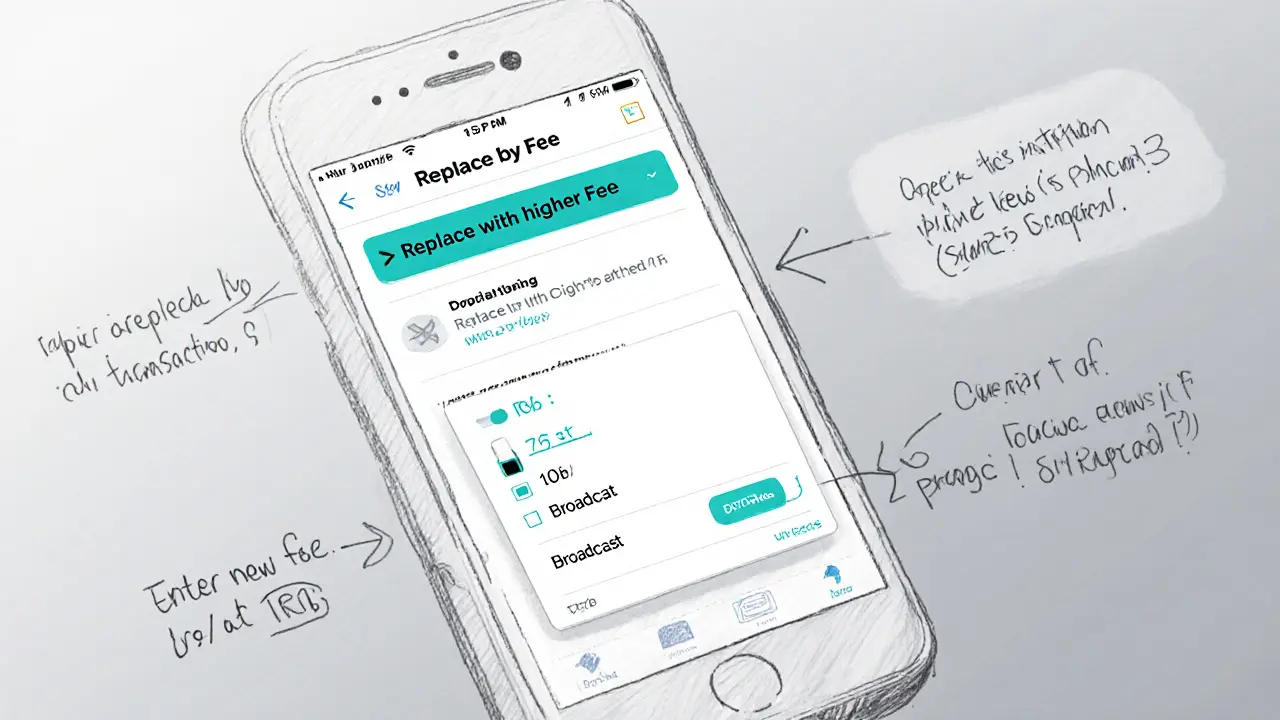
Method3 - Transaction Accelerators
A transaction accelerator is a third‑party service that forwards your transaction directly to mining pools for a small extra fee. Reliability varies, so pick reputable providers like ViaBTC or the open‑source “BTC.com Accelerator”.
- Copy the transaction ID (TXID) of the stuck transaction.
- Paste the TXID into the accelerator’s web form.
- Pay the advertised accelerator fee (usually a few satoshis per byte).
- Submit; the service will push the TXID to a pool that promises fast inclusion.
Accelerators can confirm a transaction within one or two blocks, but they do not guarantee success during extreme congestion.
Method4 - Letting Expiration Clear the Mempool
If you’re not in a hurry, you can simply wait for the node to drop the transaction after its timeout. Once dropped, you can rebroadcast with an appropriate fee.
- Monitor the transaction on mempool.space. If the ‘estimated confirmation’ field stays blank for 72hours, the transaction is likely about to expire.
- After it disappears from the mempool, create a new transaction using the same inputs.
- Set a fee that matches or exceeds the current average.
- Broadcast the new transaction.
This method incurs no extra cost beyond the new fee, but it can take days.
Method5 - Direct Cancellation via Double‑Spend (Advanced)
Some wallets let you create a “cancellation” transaction that spends the same inputs back to your own address with a higher fee. It’s effectively a manual double‑spend.
- Require full control of the private keys (hardware wallets or Bitcoin Core).
- Construct a new transaction that returns the funds to yourself.
- Set a fee high enough to out‑bid the stuck transaction.
- Broadcast; miners will reject the lower‑fee parent in favor of your new tx.
Because it’s a manual process, only experienced users should attempt this.
Quick Comparison of All Methods
| Method | Who Can Use | Extra Fee Needed | Typical Speed | Complexity |
|---|---|---|---|---|
| Replace‑by‑Fee (RBF) | Sender with RBF‑enabled wallet | Higher fee (≈ current avg) | 10‑30min | Low |
| Child Pays for Parent (CPFP) | Recipient holding the unconfirmed output | Combined fee meeting market rate | 15‑45min | Medium |
| Transaction Accelerator | Anyone (requires TXID) | Accelerator fee (varies) | 1‑2 blocks | Low‑Medium |
| Expiration + Rebroadcast | Anyone | New fee only | Hours‑Days | Low |
| Manual Double‑Spend Cancel | Advanced users with private‑key control | High fee to outrank parent | Varies (depends on fee) | High |
Step‑by‑Step Checklist Before You Act
- Open a block explorer like mempool.space and paste your TXID.
- Note the current ‘fee per vbyte’ recommendation (e.g., 45sat/vB).
- Identify whether your wallet supports RBF or CPFP.
- Choose the method that matches your role (sender vs. recipient) and urgency.
- Execute the steps, then watch the confirmation status until it’s finalized.
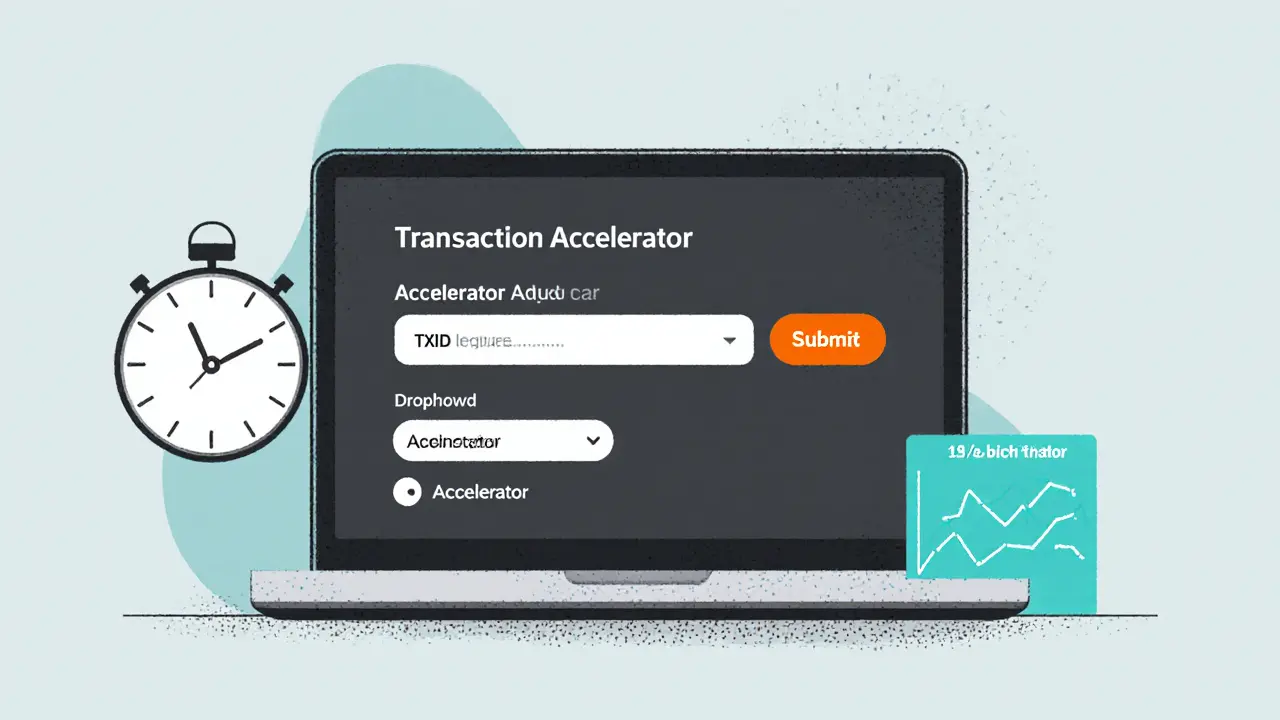
Frequently Asked Questions
How long does a transaction normally stay in the mempool?
Under typical network conditions, most nodes drop unconfirmed transactions after about 72hours. Some custom nodes keep them up to 14days.
Can I use RBF on any wallet?
No. The wallet must flag the transaction as replaceable at broadcast time. Electrum, Bitcoin Core (when enabled), and several mobile wallets support it; others do not.
What if I don’t have enough Bitcoin to cover a higher fee?
You can either wait for expiration and rebroadcast with a smaller fee, or ask the recipient to use CPFP, which only requires them to have enough balance for the child transaction.
Are transaction accelerators safe?
Reputable accelerators only need your TXID; they never hold your private keys. Stick to services with transparent fee structures and community reviews.
Will Lightning Network adoption reduce stuck transactions?
Yes, lightning moves many small payments off‑chain, easing on‑chain congestion. However, any on‑chain transfer will still face the same mempool dynamics.
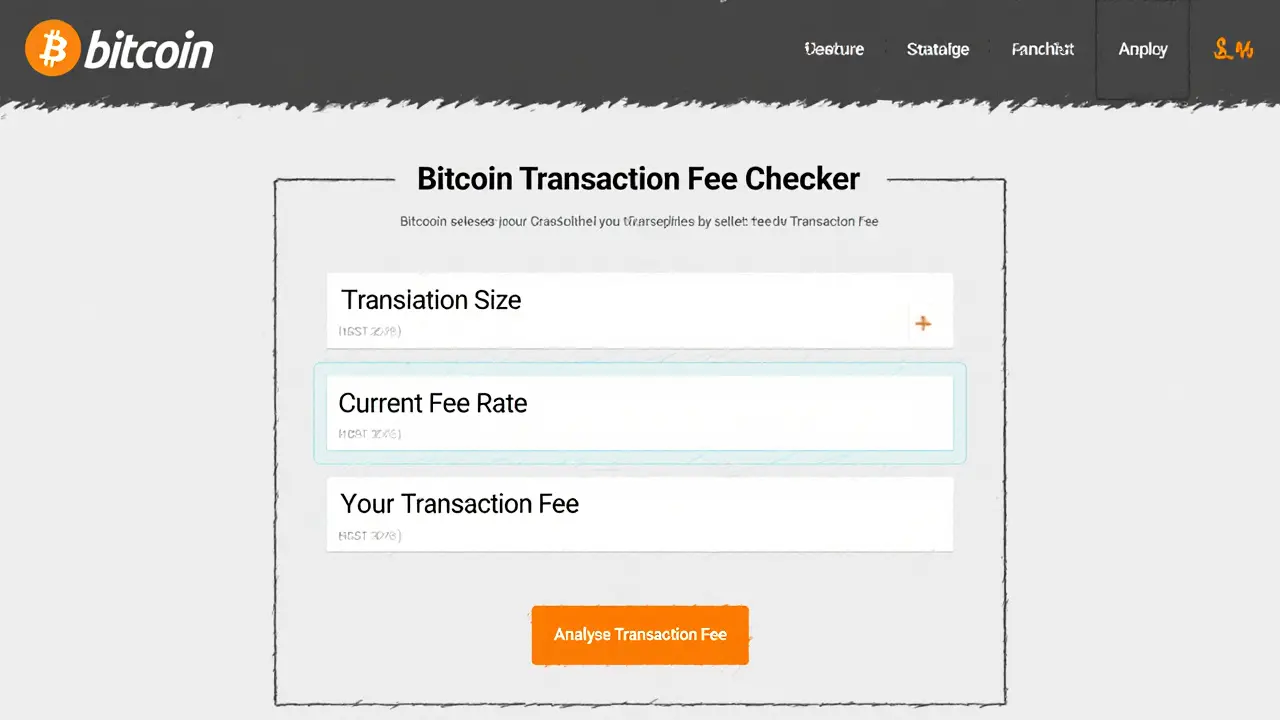
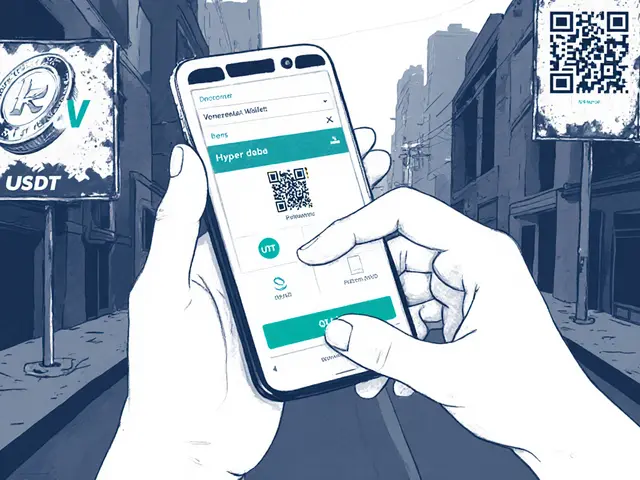
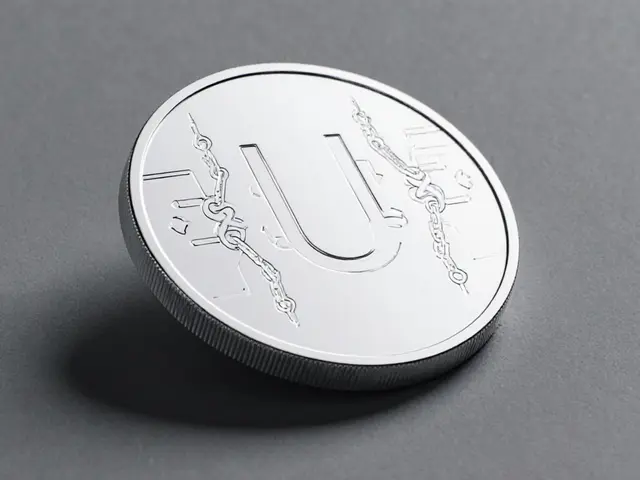
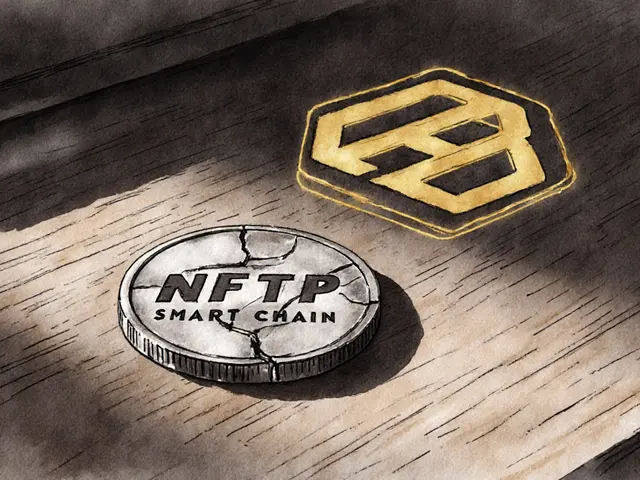
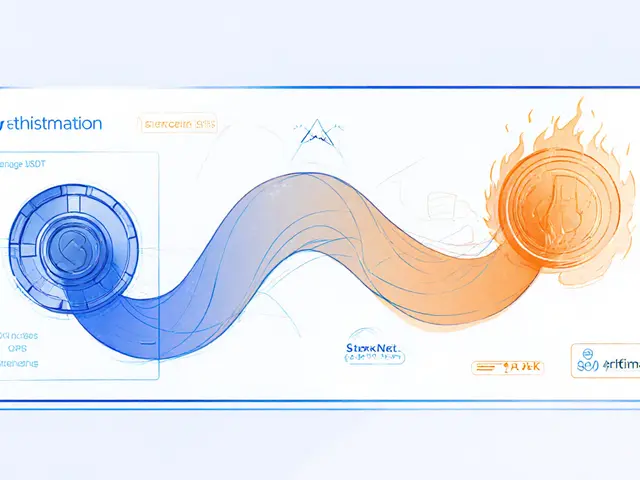

Christina Lombardi-Somaschini
3 December, 2024 . 20:07 PM
RBF is the quickest way to get a stuck tx moving.
katie sears
9 December, 2024 . 03:41 AM
If you’re the sender and your wallet supports Replace‑by‑Fee, just open the transaction, hit the bump‑fee button, and set a rate above the current mempool average.
Most modern wallets like Electrum and Bitcoin Core have this feature built‑in.
It usually confirms within half an hour when the fee is high enough.
Gaurav Joshi
14 December, 2024 . 11:16 AM
Only transactions flagged as replaceable can be bumped, otherwise you’re stuck with the original fee.
Kathryn Moore
19 December, 2024 . 18:51 PM
CPFP lets the recipient attach a high fee to the child transaction, forcing miners to confirm both together.
Christine Wray
25 December, 2024 . 02:26 AM
Exactly, and the child’s fee only needs to bring the combined package up to the market rate, so you don’t have to overpay.
roshan nair
30 December, 2024 . 10:00 AM
When you’re dealing with a stuck transaction, the first thing you should do is check a reliable mempool explorer like mempool.space to see the current fee‑per‑byte recommendation.
If the fee you paid is significantly below that number, you know you’ll need to take action.
The easiest route, if your wallet supports it, is to use Replace‑by‑Fee (RBF) and simply bump the fee to meet or exceed the average.
Make sure the original transaction was marked as replaceable, otherwise the network will ignore your new attempt.
If you’re the recipient and the sender can’t bump the fee, switch to Child Pays for Parent (CPFP) by creating a child transaction with a high enough fee to bring the combined package into the miners’ sweet spot.
Most modern wallets, including Electrum, Bitcoin Core, and Exodus, let you do this with a few clicks.
When you broadcast the child transaction, the network sees the two as a package and will prioritize them together.
If neither RBF nor CPFP is an option, you can resort to a transaction accelerator service; just paste the TXID and pay the modest fee they ask for.
Reputable accelerators like ViaBTC have a good track record, but always double‑check they aren’t a scam.
Another low‑cost method is to simply wait for the transaction to expire from the mempool after about 72 hours, then rebroadcast with a higher fee.
While this can take days, it saves you from paying any extra accelerator fees.
For power users who control the private keys, there’s an advanced technique: craft a manual double‑spend that returns the funds to yourself with a higher fee, effectively canceling the low‑fee parent.
This is risky and should only be attempted if you’re comfortable with raw transaction building.
Regardless of the method you choose, always double‑check the fee market before committing, because rates can swing wildly during spikes.
Finally, consider using the Lightning Network for small, frequent payments to keep on‑chain traffic low and avoid mempool congestion in the first place.
Jay K
4 January, 2025 . 17:35 PM
Good point, the long explanation really covers all bases.
Kimberly M
10 January, 2025 . 01:10 AM
💡 Pro tip: always double‑check the mempool fee before you send, it saves you a lot of hassle! 😊
Navneet kaur
15 January, 2025 . 08:44 AM
But you can just wait, no need to overthink it.
Marketta Hawkins
20 January, 2025 . 16:19 PM
Accelerators are handy when you’re in a hurry.
Drizzy Drake
25 January, 2025 . 23:54 PM
Yeah, I’ve used ViaBTC’s accelerator a few times; it usually gets my tx in the next block, which is awesome when the market spikes.
AJAY KUMAR
31 January, 2025 . 07:29 AM
When the congestion hits, it feels like the network is throttling your every move, and only the bold fee‑bump can break through the chaos.
bob newman
5 February, 2025 . 15:03 PM
Oh sure, just trust some random website with your TXID and hope they don’t disappear with your satoshis.
Anil Paudyal
10 February, 2025 . 22:38 PM
Waiting for expiration is free but slow.
Kimberly Gilliam
16 February, 2025 . 06:13 AM
Ugh, another “wait forever” suggestion, how boring.
Jeannie Conforti
21 February, 2025 . 13:48 PM
Remember, you can always rebroadcast with a higher fee after it drops; it’s a simple trick that many newbies overlook.
tim nelson
26 February, 2025 . 21:22 PM
That’s a solid approach, especially if you don’t want to splash extra cash on accelerators.
Zack Mast
4 March, 2025 . 04:57 AM
Lightning is the future for quick payments.
Dale Breithaupt
9 March, 2025 . 12:32 PM
Exactly, keep fees reasonable and the network will sort you out.
Rasean Bryant
14 March, 2025 . 20:07 PM
Stay patient and keep an eye on the fee market – your transaction will get there.